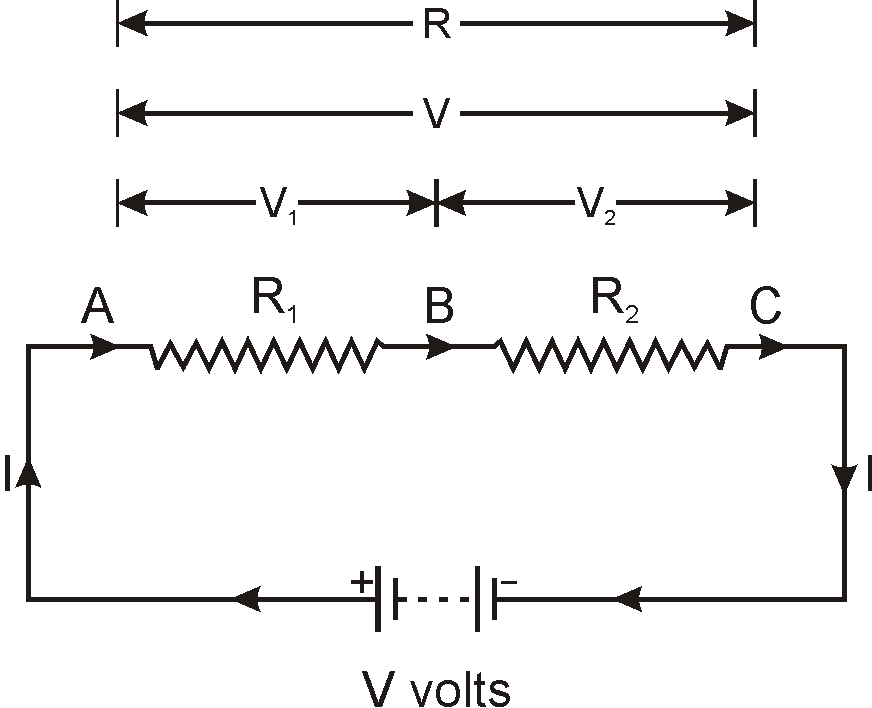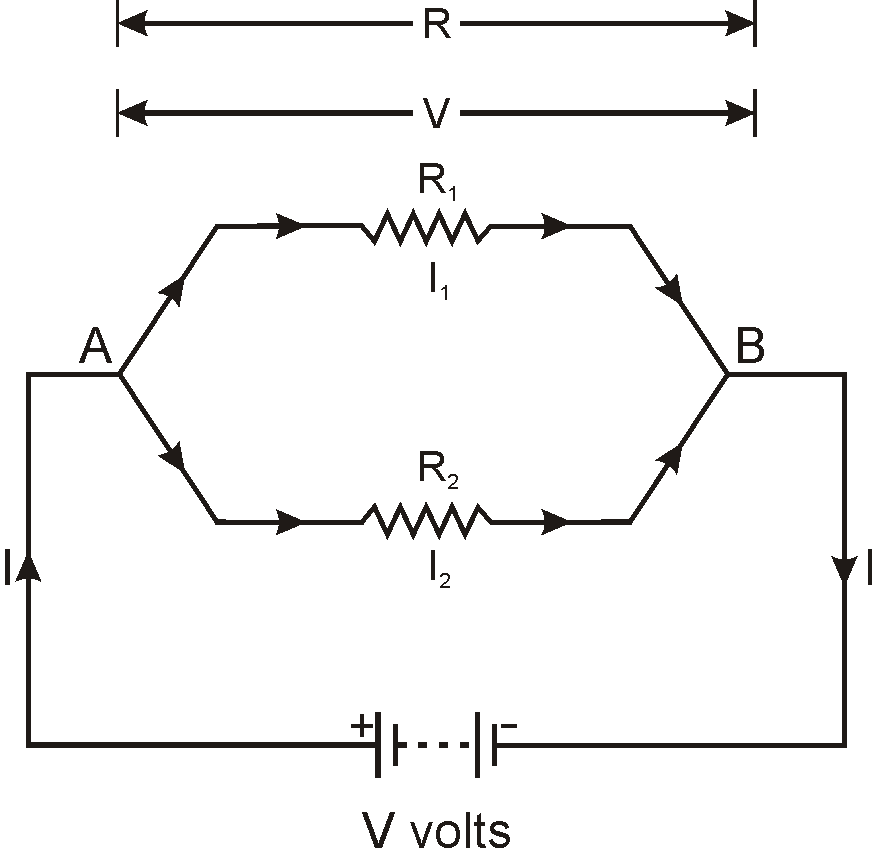
The resistance can be combined in two ways:
(i) In series, and
(ii) In parallel.
When two or more resistances are joined end to end so that same current flows through each of them in turn, they are said to be connected in series. Here, the total resistance is equal to the sum of the individual resistances.
Resultant Resistance of Two Resistances Connected in Series

So, applying Ohm’s law to the whole circuit, we get:
Cancelling I from both sides, we get:
Resultant resistance (combined resistance or equivalent resistance),
Combined Resistance of Two Resistances Connected in Parallel

When designing an electric circuit, we should consider whether a series circuit or a parallel circuit is better for the intended use. A series circuit is also safer because the current in it is smaller.